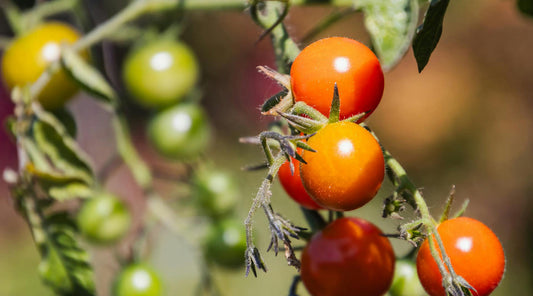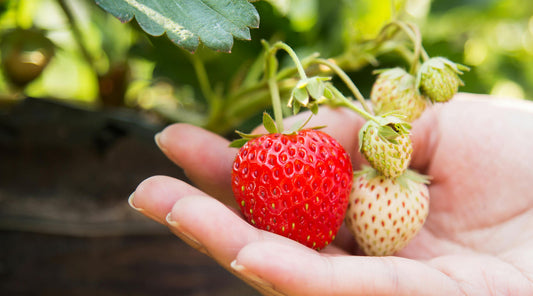With the constant threat of Coronavirus clearing our grocery store shelves, more and more people are attempting to grow their own food. Not only is gardening practical, but it’s also fun, satisfying, and produces higher quality produce than your average local grocery chain. As many know, this isn’t the first time Americans have turned to their own gardens in order to defeat an enemy and feed their families. The idea of a victory garden had been long forgotten to a bygone era of pin curls and top hats, but with the emergence of a new type of war, they are back at the forefront of many people’s minds.
The History of Victory Gardens
 The victory garden was first promoted during World War I when the supply chain of food was struggling to keep up with demand, especially with so many away from their day jobs and helping with war efforts. Before he was president, Herbert Hoover was appointed as the head of the U.S. Food Administration by then-president Woodrow Wilson. His main goal was to limit the need for wartime rationing and he did so by encouraging Americans to grow their own food while also limiting their consumption. Doing so was seen as a Patriotic way of helping the Allies take down the Central Powers, without actively serving in the military. It wasn’t very long after World War I that the need for Victory Gardens arose once again, except this time on a much larger scale. At this point in history, many were already accustomed to the idea of rationing food, so when the government limited the number of canned goods allowed to one family, victory gardens were once again utilized. For those without sprawling backyards, empty community lots were turned into community gardens, and most schools started a school garden initiative as well. Once the season for growing was over, the excess crop was canned and stored for winter use. Soldiers were able to get the food they needed on the front lines, and those at home were able to feed their families and neighbors.
The victory garden was first promoted during World War I when the supply chain of food was struggling to keep up with demand, especially with so many away from their day jobs and helping with war efforts. Before he was president, Herbert Hoover was appointed as the head of the U.S. Food Administration by then-president Woodrow Wilson. His main goal was to limit the need for wartime rationing and he did so by encouraging Americans to grow their own food while also limiting their consumption. Doing so was seen as a Patriotic way of helping the Allies take down the Central Powers, without actively serving in the military. It wasn’t very long after World War I that the need for Victory Gardens arose once again, except this time on a much larger scale. At this point in history, many were already accustomed to the idea of rationing food, so when the government limited the number of canned goods allowed to one family, victory gardens were once again utilized. For those without sprawling backyards, empty community lots were turned into community gardens, and most schools started a school garden initiative as well. Once the season for growing was over, the excess crop was canned and stored for winter use. Soldiers were able to get the food they needed on the front lines, and those at home were able to feed their families and neighbors.
Through the government's effort, many popular magazines such as Better Homes & Gardens offered detailed explanations of how to garden for beginners, and how to yield the most crop. This wasn’t just some hobby, it was imperative that those who were growing were doing so effectively and efficiently. There were even garden layouts published that showed exactly how to get the most out of any outdoor space. Many at-home gardeners went so far as planting on their rooftops and in pots on their windowsills. This is a practice that is still common today, with many moving into more densely populated cities without backyard spaces. Some of the most common produce grown during the wars were tomatoes, potatoes, beets, corn, and lettuce. Anything nutritious and hardy was a garden staple.
How to Start Your Own Victory Garden
Nowadays we see a lot of whimsy and design that goes into outdoor spaces, but practicality is the key feature to any victory garden. You may not be able to be quite as creative as you want, but you can still add plenty of your own touch to your space while maximizing your output. Your best bet for quality crops is building a raised bed garden, as it helps you control the quality of your soil, as well as sun exposure. Head to our blog post about building raised beds for more detail. You can even add a pop of color by using our Raised Bed Garden Corners in green, blue, or purple. They also make building the raised bed much easier.
If like many of the Victory Gardeners of the 20th century, you simply don’t have the room required to build a raised bed you can optimize space by going vertical with a Yard Tree. With 3 adjustable plant hooks and 2 flower pot rings, the Yard Tree's base takes up only twenty-two inches of space. Of course, you may not be able to grow enough to feed your entire family but it’s certainly a step in the right direction. Herb gardens require much less room and still allow you to add a homegrown flare to any of your dishes.
As for which plants to grow, the best are those that will produce high yield and are relatively easy to manage. Remember that your main goal is to use the garden to feed you and your family. Flowers are beautiful and fun to grow, but for the purposes of this garden let’s stick to only edible varieties. Plants such as potatoes, squash, tomatoes, beets, kale, eggplants, and romaine will all help you sustain yourself and put meals on the table. Of course, what you grow also depends on the season and your hardiness zone. When it’s Spring and Summer grow as much as you can; you even want to overproduce so that you can “can” what you can’t eat fresh. Try saying that ten times fast. For tips on canning head over to the National Center for Home Food Preservation.

If you have some extra space you may also want to consider growing fruit in order to have more variety. Fruit is also perfect for canning or throwing into a blender for a delicious homemade smoothie. Strawberries are ideal for those with a vertical garden as they don’t require much space, but make sure they have plenty of sunlight. Raspberries and blackberries will do well in a raised bed and will yield more fruit than you know what to do with. Plums and peaches are absolutely delectable fresh off of the tree, just remember it may take years before you see the results you want from a sapling, so head to your local nursery for a more mature plant.
There’s nothing better than eating something you grew yourself. Even when things are back to normal, we believe this new love for gardening will last for generations to come.







